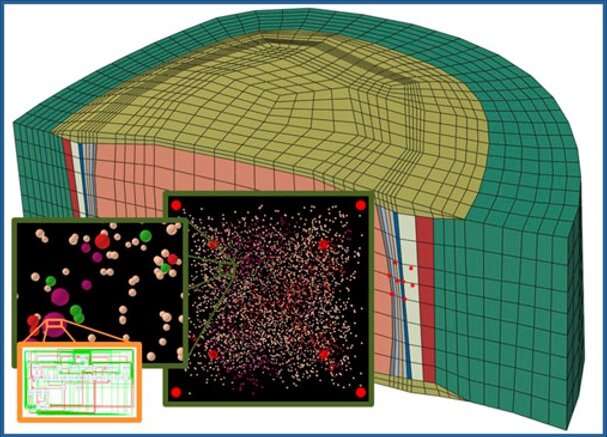
Lower back pain is the most widespread musculoskeletal problem in the population, with a huge economic and social impact. According to data for 2017, years of living with disability due to lower back pain have increased by more than 50% since 1990, especially in low- and middle-income countries. In addition, it is the main cause of employee absenteeism, and the difficulty of establishing a clear diagnosis limits treatment options, which usually focus on the pain treatment, without being able to propose possibilities for curing the problem. As a result, people suffering with chronic low back pain are often greatly misunderstood. The difficulty for health professionals is that there are many causes of low back pain and they are difficult to identify. Degeneration of the lumbar intervertebral discs usually causes more than a third of low back pain. While a better understanding of this degeneration can bring great benefits to the treatment and management of the disease, the degeneration of the lumbar intervertebral discs is highly multifactorial and the mechanisms are poorly understood, despite advances in experimental and clinical research.
Researchers in the area of Biomechanics and Mechanobiology (BMMB) at the UPF Biomedical Engineering Research Unit BCN MedTech directed by Jerôme Noailly have been working for more than ten years on the development of computer models that can reflect the mechanisms associated with intervertebral disc degeneration. These models combine mechanics and biology. They allow generating information that is not directly measurable, to discover levers that can slow down or deactivate the degenerative processes that take place in addition to the effects of natural aging in some people. In recent years they have been inspired by the modeling used in systems biology to create a computer model to understand the complex cellular interactions that take place inside the intervertebral discs. The results have been published in the journal Frontiers in Bioengineering and Biotechnology and are part of the doctoral thesis of the researcher Laura Baumgartner.
Intervertebral discs are large gelatinous sacs largely composed of water, up to 80% of the volume in the central area. Like sponges, if they lose water they are crushed by the pressure exerted by the body. Dehydration of the discs is common in cases of degeneration and there is currently no treatment to rehydrate the affected tissues. UPF researchers are trying to understand the reasons and dynamics for this dehydration and degeneration.
“The integrated study of all stimuli on an experimental level is very complicated and involves a very high financial cost, but the combination with computational research enables approximations of individual cell responses in a complex environment”
“The goal of our models is to see what activity there is in cells in different regions of the central tissue of the intervertebral disc, the nucleus pulposus, where degenerative processes are assumed to begin”, Baumgartner explains. “We aim to integrate the combined effect of various stimuli into cellular activity and see what effects they have”.
Intervertebral disc cells respond to a large number of stimuli. These stimuli are largely regulated by the mechanical load caused by a person’s physical activity. On the one hand, the cell feels this load on the surface, and on the other hand, these loads also affect the concentrations of biochemical stimuli in the cellular environment, such as the inflammatory environment, the nutritional environment, etc.
“The integrated study of all stimuli on an experimental level is very complicated and involves a very high financial cost”, Baumgartner continues, “but the combination with computational research enables approximations of individual cell responses in a complex environment”.
The researchers have developed a truly interdisciplinary methodology, which they hope to see increasingly replicated, and consists of the integrated management of experimental work with in vitro samples, and modeling work with mathematical and computational methods (in silico).
To perform the in vitro experiments, Baumgartner spent four months in the Laboratory for Orthopaedic Technology at ETH Zurich University. She examined cellular behavior under different variables, such as various levels of glucose concentration, and measured the production of inflammatory factors, the gene expression of the structural proteins that make up the tissues of the intervertebral disc, that of enzymes that are responsible for degrading these structural proteins and, finally, cell viability (the number of living cells that exist).
“By optimally combining two research disciplines, we are able to achieve an efficient methodology for understanding very complex regulations in a tissue, which ultimately increases our understanding of degenerative processes”
The integration of data from these in vitro experiments was crucial to refine the computational model. “By optimally combining two research disciplines, we are able to achieve an efficient methodology for understanding very complex regulations in a tissue, which ultimately increases our understanding of degenerative processes”, Baumgartner affirms.
Source: Read Full Article
